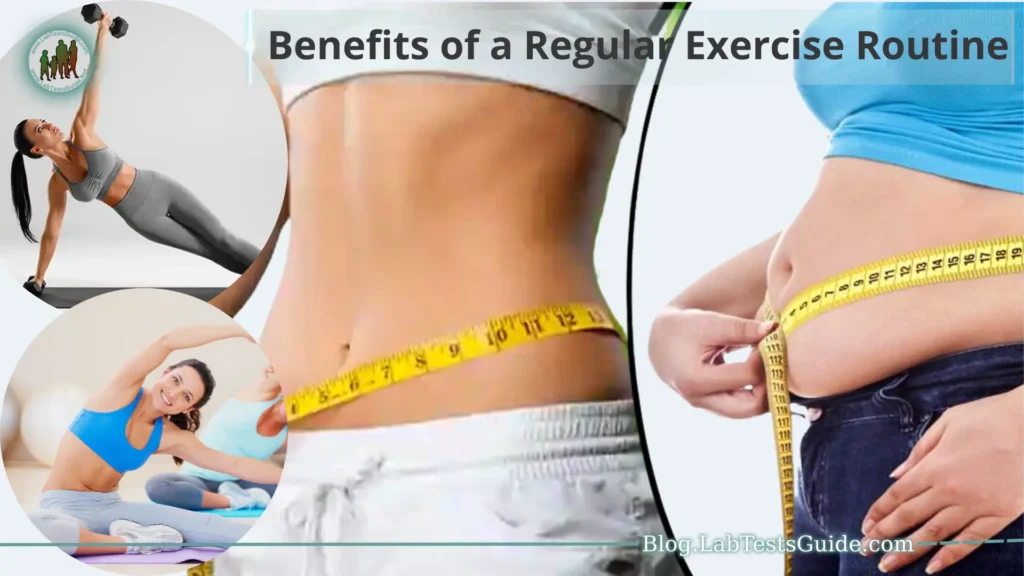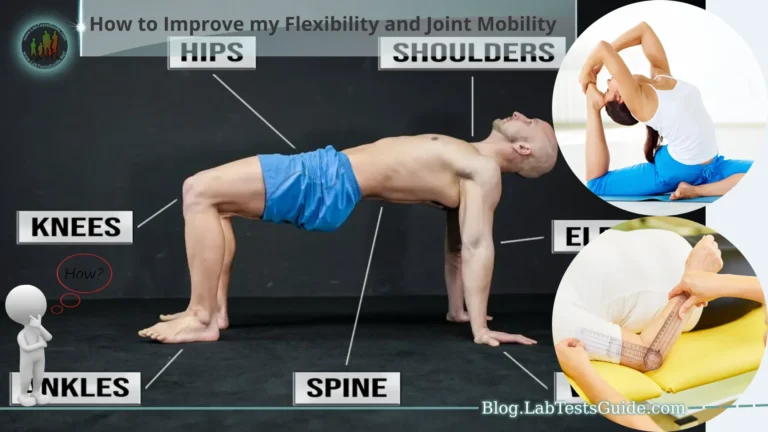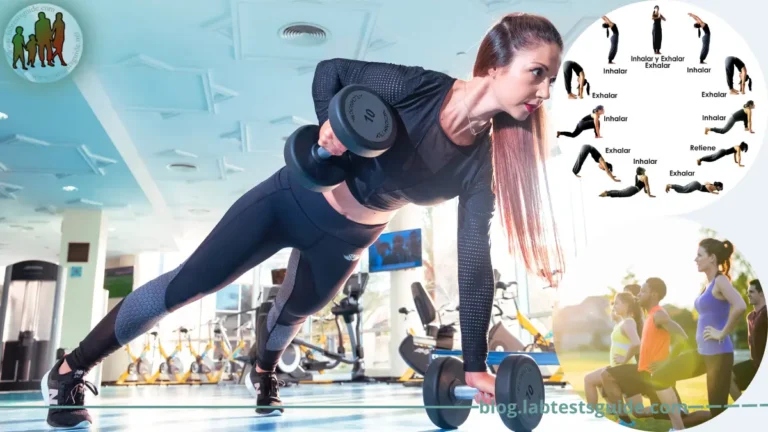Regular exercise is an essential aspect of maintaining overall health and well-being. It involves engaging in physical activities that promote strength, flexibility, and cardiovascular fitness. Whether it’s walking, jogging, swimming, weightlifting, or yoga, incorporating regular exercise into one’s daily routine can lead to numerous benefits for both the body and mind.

In this discussion, we will explore the various advantages of adopting a consistent exercise routine. From physical health benefits, such as weight management and improved cardiovascular health, to mental health benefits like reduced stress and enhanced cognitive function, exercise offers a comprehensive approach to enhancing one’s quality of life.
what is physical health benefits?
Here are some of the key physical health benefits associated with maintaining an active lifestyle.
- Weight Management and Body Composition: Regular exercise helps in managing body weight by burning calories and increasing metabolism. It can also aid in reducing body fat and maintaining a healthy body composition, which is the proportion of muscle, bone, and fat in the body.
- Improved Cardiovascular Health: Exercise benefits the heart and circulatory system by enhancing heart function and reducing the risk of cardiovascular diseases. It can lower blood pressure, improve blood circulation, and increase the levels of “good” HDL cholesterol while reducing “bad” LDL cholesterol.
- Strengthened Muscles and Bones: Physical activity, particularly weight-bearing exercises and strength training, promotes muscle growth and enhances bone density. Strong muscles and bones reduce the risk of injuries, fractures, and conditions like osteoporosis.
- Enhanced Flexibility and Joint Health: Regular stretching exercises improve flexibility and maintain joint mobility, reducing the risk of joint-related problems and enhancing overall range of motion.
- Better Respiratory Function: Exercise helps to improve lung capacity and efficiency, making breathing easier during physical activities and daily tasks.
- Regulation of Blood Sugar Levels: Physical activity can aid in controlling blood sugar levels, making it beneficial for individuals with diabetes or those at risk of developing diabetes.
- Improved Digestion: Regular exercise can support healthy digestion by stimulating the movement of food through the digestive tract and reducing the risk of constipation.
- Lowered Risk of Chronic Diseases: Engaging in regular physical activity has been associated with a decreased risk of chronic conditions such as type 2 diabetes, certain cancers, and metabolic syndrome.
- Enhanced Immune System: Moderate exercise can strengthen the immune system, reducing the likelihood of contracting infections and illnesses.
- Increased Energy Levels: Regular physical activity can lead to increased energy levels and reduced feelings of fatigue, contributing to a more active and productive lifestyle.
- Better Sleep Quality: Exercise has been linked to improved sleep patterns, helping individuals fall asleep faster and enjoy more restful sleep.
- Pain Management: Exercise can provide relief from chronic pain conditions like back pain and arthritis by strengthening muscles and improving joint support.
Mental Health Benefits:
The following are some of the mental health benefits associated with maintaining an active lifestyle.
- Reduced Stress and Anxiety: Exercise is a natural stress reliever as it triggers the release of endorphins, which are chemicals in the brain that act as natural mood lifters. Regular physical activity can help reduce feelings of stress and anxiety, promoting a sense of calm and relaxation.
- Enhanced Mood and Happiness: Physical activity has been linked to improved mood and a greater sense of well-being. Exercise can help combat feelings of sadness and depression, leading to an overall improvement in emotional health.
- Improved Cognitive Function: Regular exercise has been shown to enhance cognitive abilities, including memory, attention, and problem-solving skills. It stimulates brain activity and can aid in the prevention of age-related cognitive decline.
- Boosted Self-Esteem and Self-Confidence: Achieving personal fitness goals and experiencing the positive effects of exercise can boost self-esteem and self-confidence. Engaging in physical activities that challenge and improve one’s abilities can foster a positive self-image.
- Better Sleep Quality: As mentioned earlier, exercise can improve sleep patterns, leading to better sleep quality. Restful sleep is crucial for mental well-being and can contribute to improved mood and cognitive function.
- Stress Management: Regular physical activity provides a healthy outlet for managing stress. It can serve as a distraction from daily worries and can help individuals cope with life’s challenges more effectively.
- Increased Brain Health: Exercise supports brain health by promoting the growth of new neurons and improving neural connectivity. This can enhance cognitive resilience and protect against cognitive decline.
- Release of Tension and Emotions: Physical activity can be a cathartic experience, allowing individuals to release pent-up emotions and tension, leading to a sense of emotional relief.
- Social Interaction and Support: Participating in group exercise classes or sports activities can provide opportunities for social interaction and support, which contribute to improved mental well-being.
- Enhanced Sense of Achievement: Accomplishing fitness goals and making progress in physical activities can provide a sense of achievement and fulfillment, positively impacting mental health.
- Coping with Depression and Anxiety: Exercise has been found to be effective in assisting individuals dealing with mild to moderate depression and anxiety. It is often used as a complementary approach to therapy and medication.
- Increased Resilience to Stress: Regular exercise can enhance an individual’s resilience to stress, making them better equipped to handle life’s challenges and adversities.
Social and Emotional Benefits:
Here are some of the key social and emotional benefits of maintaining an active lifestyle.
Social Benefits:
- Increased Social Interaction: Participating in group exercises, team sports, or fitness classes provides opportunities for social interaction and the chance to meet new people who share similar interests. Social connections can lead to a sense of belonging and reduce feelings of isolation.
- Building Supportive Relationships: Joining fitness communities or exercising with friends and family can foster supportive relationships, creating a network of individuals who encourage and motivate each other to achieve their fitness goals.
- Enhanced Communication Skills: Group exercises and team sports often require effective communication, fostering the development of interpersonal skills that can be applied in various areas of life.
- Strengthened Community Bonds: Participating in local fitness events or sports leagues can strengthen ties within the community and promote a sense of camaraderie among participants.
Emotional Benefits:
- Improved Stress Coping Mechanisms: Regular exercise can serve as a healthy outlet for managing stress and emotional tension, helping individuals cope with daily challenges more effectively.
- Boosted Mood and Happiness: Physical activity triggers the release of endorphins, neurotransmitters that promote feelings of happiness and pleasure, leading to an improved overall emotional state.
- Increased Self-Esteem: Achieving fitness goals and consistently engaging in exercise can boost self-esteem and self-confidence, leading to a more positive self-image.
- Sense of Accomplishment: Overcoming physical challenges and reaching fitness milestones can provide a sense of accomplishment, boosting feelings of self-worth and fulfillment.
- Emotional Resilience: Regular exercise has been linked to increased emotional resilience, making individuals more capable of bouncing back from setbacks and adversities.
- Stress Reduction: Exercise has a direct impact on reducing stress hormones in the body, promoting a more relaxed and calm emotional state.
- Enhanced Emotional Regulation: Engaging in physical activities can help individuals manage and regulate their emotions, leading to a greater sense of emotional control.
- Decreased Feelings of Anxiety and Depression: Regular exercise has been shown to be effective in reducing symptoms of anxiety and depression, promoting emotional well-being.
- Release of Positive Neurotransmitters: Physical activity stimulates the release of dopamine, serotonin, and norepinephrine, neurotransmitters that play a crucial role in regulating mood and emotions.
- Improved Body Image: Regular exercise can help individuals develop a more positive body image and reduce negative thoughts related to appearance.
Long-Term Benefits:
The following long-term advantages.
- Increased Longevity and Healthy Aging: Regular exercise is associated with increased life expectancy and a reduced risk of premature death. Those who stay physically active tend to experience better health as they age, with a higher likelihood of maintaining their independence and overall well-being.
- Prevention of Age-Related Decline: Exercise can help counteract age-related declines in muscle mass, bone density, and cognitive function. It may reduce the risk of conditions like sarcopenia (loss of muscle mass), osteoporosis, and age-related cognitive decline.
- Maintenance of Weight and Body Composition: Sustaining a regular exercise routine can help individuals maintain a healthy weight and body composition over the long term, reducing the risk of obesity-related health issues.
- Improved Cardiovascular Health: Long-term engagement in cardiovascular exercises can lead to a stronger heart and healthier blood vessels, reducing the risk of cardiovascular diseases such as heart attack and stroke.
- Reduced Risk of Chronic Diseases: Regular physical activity can lower the risk of developing chronic conditions such as type 2 diabetes, certain cancers (e.g., colon and breast cancer), and metabolic syndrome, leading to better long-term health outcomes.
- Enhanced Bone Health: Weight-bearing exercises and strength training can contribute to better bone health over time, reducing the risk of osteoporosis and fractures, especially in postmenopausal women and older adults.
- Delayed Onset of Age-Related Disabilities: Staying physically active can delay the onset of age-related disabilities, allowing individuals to maintain their independence and quality of life for longer.
- Lowered Healthcare Costs: Regular exercise can reduce the need for medical interventions and hospitalizations, leading to cost savings in healthcare expenses over time.
- Increased Mobility and Flexibility: Long-term engagement in exercises that promote flexibility and balance can help maintain mobility and flexibility in joints and muscles, reducing the risk of mobility issues in old age.
- Better Mental Health and Cognitive Function: Sustained physical activity can have lasting positive effects on mental health, promoting emotional well-being and cognitive function even as individuals age.
- Healthy Habits for Future Generations: When regular exercise becomes a long-term habit, it can set a positive example for younger generations, encouraging them to adopt an active lifestyle and enjoy the benefits of physical activity throughout their lives.
- Improved Quality of Life: Ultimately, the combination of improved physical, mental, and emotional well-being resulting from regular exercise leads to an enhanced overall quality of life and a more fulfilling, active, and enjoyable existence.
Specific Exercise-Related Benefits:
Here are some specific exercise-related benefits for various types of physical activities.
Cardiovascular Exercises (e.g., Running, Cycling, Swimming):
- Improved heart health: Cardiovascular exercises strengthen the heart, leading to better pumping efficiency and improved blood circulation.
- Increased aerobic capacity: Regular cardiovascular workouts enhance the body’s ability to use oxygen during physical activity, leading to increased stamina and endurance.
- Lowered resting heart rate: Consistent cardio training can result in a reduced resting heart rate, indicating a more efficient cardiovascular system.
- Weight management: Cardiovascular exercises burn calories, making them effective for weight loss and weight maintenance.
Strength Training (e.g., Weightlifting, Bodyweight Exercises):
- Increased muscle strength and mass: Strength training promotes muscle growth and enhances overall strength and power.
- Enhanced metabolism: Building lean muscle through strength training can lead to an increased resting metabolic rate, aiding in weight management.
- Improved bone density: Resistance exercises help strengthen bones, reducing the risk of osteoporosis and fractures.
- Enhanced joint stability: Strengthening muscles around joints can provide better support and stability, reducing the risk of injuries.
Flexibility and Balance Exercises (e.g., Yoga, Pilates):
- Improved flexibility: Regular practice of flexibility exercises can enhance joint range of motion and reduce muscle stiffness.
- Better posture: Exercises that focus on core strength and alignment, like yoga, can contribute to improved posture and reduced back pain.
- Enhanced balance and coordination: Balance exercises help improve proprioception and stability, reducing the risk of falls, especially in older adults.
High-Intensity Interval Training (HIIT):
- Time-efficient workouts: HIIT involves short bursts of intense activity followed by brief rest periods, making it a time-efficient way to improve cardiovascular fitness and burn calories.
- Increased calorie burn: HIIT workouts can lead to an afterburn effect, where the body continues to burn calories at an elevated rate even after the workout is complete.
- Improved aerobic and anaerobic capacity: HIIT workouts challenge both aerobic and anaerobic systems, leading to overall improved endurance.
Mind-Body Exercises (e.g., Tai Chi, Qigong):
- Stress reduction: Mind-body exercises focus on breath control and mindfulness, promoting relaxation and stress relief.
- Improved mental clarity and focus: Practicing mind-body exercises can enhance cognitive function and mental clarity.
- Emotional well-being: Mind-body exercises promote a sense of tranquility and emotional balance, supporting overall mental health.
Group Fitness Classes:
- Social support: Group fitness classes offer the benefit of social interaction and camaraderie, fostering a supportive exercise environment.
- Motivation: Exercising in a group setting can provide motivation and accountability, helping individuals stay consistent with their workouts.
Incorporating Exercise into Daily Life:
Here are some practical tips to help you seamlessly integrate exercise into your daily life.
- Set Clear and Realistic Goals: Establish specific and achievable exercise goals that align with your fitness level and schedule. Start with small, attainable targets and gradually increase the intensity and duration as you progress.
- Find Activities You Enjoy: Choose exercises or physical activities that you genuinely enjoy doing. Whether it’s dancing, hiking, swimming, or playing a sport, engaging in activities you find enjoyable increases the likelihood of sticking with them long-term.
- Make Exercise a Habit: Schedule designated exercise times into your daily or weekly routine. Treat these workout sessions as non-negotiable commitments, just like any other important appointment or task.
- Be Active Throughout the Day: Look for opportunities to be active during your daily activities. Take the stairs instead of the elevator, walk or bike to nearby locations, or engage in light exercises during breaks at work.
- Incorporate Exercise into Your Commute: If possible, walk, bike, or use public transportation part of the way to work or school. This allows you to get some exercise while reducing your carbon footprint.
- Embrace Active Hobbies: Adopt hobbies that involve physical activity, such as gardening, dancing, or playing recreational sports. This way, you’ll stay active while doing something you enjoy.
- Involve Friends and Family: Exercise becomes more enjoyable when shared with others. Invite friends, family members, or colleagues to join you for workouts or physical activities.
- Utilize Technology: Use fitness apps, activity trackers, or smartwatches to monitor your progress and motivate yourself to reach your exercise goals.
- Break It Up: If finding long stretches of time for exercise is challenging, break your workouts into shorter, more manageable sessions throughout the day. Even 10-15 minutes of activity at a time can be beneficial.
- Make Chores Active: Turn everyday household chores into exercise opportunities. Vacuuming, gardening, cleaning, and other household tasks can burn calories and keep you active.
- Be Flexible: If you miss a scheduled workout, don’t be too hard on yourself. Adapt to changing circumstances and find alternative ways to be active when your original plan isn’t feasible.
- Reward Yourself: Celebrate your exercise achievements, whether big or small, with non-food rewards. Treat yourself to a relaxing massage, a new workout outfit, or some other form of self-care.
FAQs:
Why is regular exercise important for overall health?
Regular exercise is vital for overall health because it offers a wide range of benefits. It improves cardiovascular health, enhances muscle strength and flexibility, helps with weight management, boosts mood and mental well-being, and reduces the risk of chronic diseases such as diabetes and certain cancers. Engaging in physical activity also promotes longevity and healthy aging.
How much exercise should I aim for each week?
The recommended amount of exercise varies based on individual fitness levels and goals. As a general guideline, adults should aim for at least 150 minutes of moderate-intensity aerobic activity or 75 minutes of vigorous-intensity aerobic activity per week, along with muscle-strengthening activities on two or more days a week. It’s essential to find a balance between aerobic, strength, and flexibility exercises.
Can I exercise if I have a health condition or injury?
In many cases, exercise can be beneficial for individuals with health conditions or injuries. However, it’s crucial to consult with a healthcare professional before starting any exercise program, especially if you have specific health concerns. They can provide personalized recommendations and precautions to ensure safe and appropriate physical activity.
What are the best exercises for weight loss?
The most effective exercises for weight loss usually involve a combination of aerobic activities (such as running, cycling, swimming, or dancing) and strength training exercises. Aerobic exercises burn calories, while strength training helps build lean muscle, which can boost metabolism and aid in weight management. Remember that weight loss is also influenced by a balanced diet and overall lifestyle.
Can I exercise if I don’t have access to a gym or equipment?
Absolutely! There are many exercises that require little to no equipment and can be done at home or in outdoor spaces. Bodyweight exercises, such as push-ups, squats, lunges, and planks, are effective for building strength. Walking, jogging, or running are great cardiovascular exercises that can be done anywhere. Additionally, there are plenty of online workout videos and apps that offer guided workouts without the need for gym equipment.
How can I stay motivated to exercise regularly?
Staying motivated can be a challenge, but there are several strategies to help maintain consistency. Set realistic goals, track your progress, and celebrate your achievements. Find exercises you enjoy and vary your routine to keep things interesting. Enlist the support of friends, family, or workout buddies to stay accountable. Remind yourself of the benefits you experience from regular exercise, both physical and mental, to keep the motivation alive.
Is it safe to exercise during pregnancy?
In most cases, exercise is safe and beneficial during pregnancy. However, it’s crucial to consult with a healthcare provider before starting or continuing an exercise program while pregnant. Certain activities may need to be modified or avoided, depending on individual health factors.
What are some tips for preventing injuries during exercise?
To reduce the risk of injuries, warm up before each workout with dynamic stretching and ease into the activity gradually. Use proper form and technique during exercises, and be mindful of your body’s limits. Allow sufficient rest and recovery time between intense workouts, and listen to your body if you feel pain or discomfort, taking a break or seeking medical advice if necessary.
Conclusion:
In conclusion, embracing a regular exercise routine offers a wealth of benefits that encompass physical, mental, social, and emotional well-being. Engaging in physical activity improves cardiovascular health, strengthens muscles and bones, and aids in weight management. Moreover, exercise contributes to reduced stress and anxiety, enhanced mood and cognitive function, and increased self-esteem and self-confidence. The social aspects of exercise foster supportive relationships and a sense of community, while the emotional advantages include stress relief and improved emotional regulation. Long-term commitment to exercise leads to increased longevity, healthier aging, and a decreased risk of chronic diseases. By incorporating various types of exercises into daily life and finding activities that bring joy, individuals can enjoy a healthier, happier, and more fulfilling life overall.






